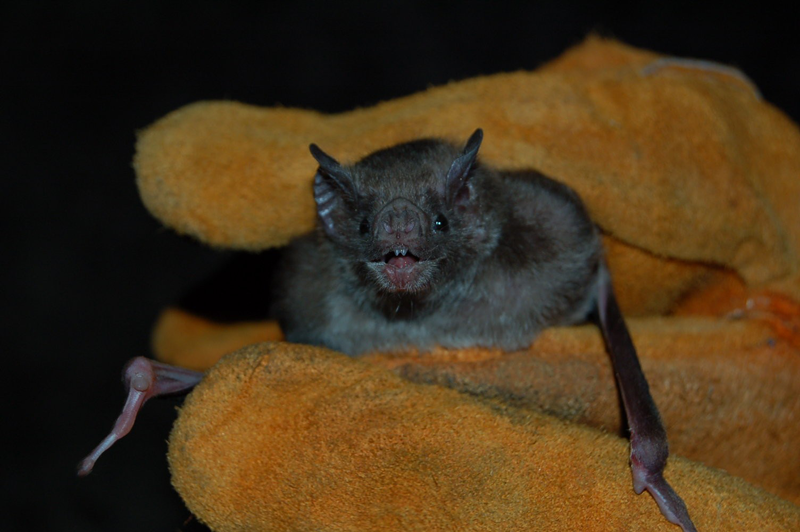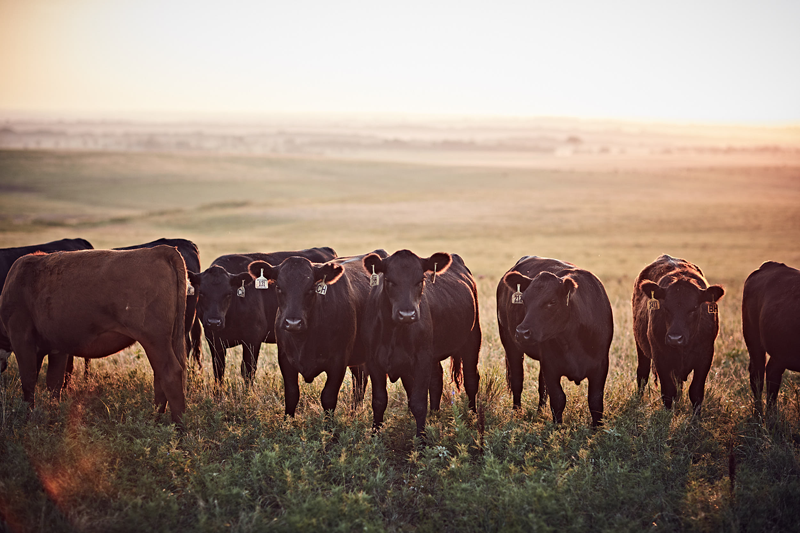Vampire bats and rabies: An emerging threat looms in the Southern U.S.
Just over the horizon, beyond the border with Mexico, a potential new threat of rabies looms for cattle, horses and other animals in the Southern United States.
The threat comes from vampire bats capable of transmitting rabies while feeding on the blood of livestock and horses. Vampire bats already cause suffering and economic damage in Mexico and South America
Now the bat’s home-range appears to be creeping northward for various reasons, including deforestation and other environmental changes. Vampire bats have been spotted in Mexico within 35 miles of the U.S. border, according to the U.S. Department of Agriculture.1
“This has caused concern and speculation about the potential movement of vampire bats to areas within the United States as a result of rising global temperatures,” the USDA says.1

A 2020 study by two experts at the USDA reported on estimates that the bats cause nearly $47 million a year in losses to livestock producers in Mexico.2
Those losses come “through mortality, damaged meat, decreased milk production, devaluation of hides caused by bites, restrictions on commercialization of suspect or sick animals, and decreased consumption of meat due to consumer fear of contamination by rabies,” the study said.
Livestock producers in the United States face the prospect of similar losses if the vampire bat’s habitat expands northward.

“While no confirmed cases of infection have occurred in the U.S., the proximity of cases within Mexico indicates that vampire bats and bat-mediated rabies may appear in the U.S. at any time,” the study says.
“As vampire bats expand their range northward, knowledge about vampire bats and recognition of rabies symptoms (in) rabid livestock and horses is likely to be lacking in rural communities.”
The U.S. Veterinary Public Health team of Boehringer Ingelheim is working with USDA-APHIS Wildlife Services to raise awareness of the threat.
Just in time for World Rabies Day – September 28, 2021 – the team is creating flyers and other materials for veterinarians, livestock producers and the equine community in parts of Texas. It plans to distribute those flyers and enlist Boehringer Ingelheim sales representatives as well as professional services veterinarians to help raise awareness.
The goal of that outreach is to call attention to the federal government’s vampire-bat surveillance efforts by spreading the word about the signs of vampire-bat bites on livestock and horses. The team also is encouraging people who own and care for animals to consider the importance of vaccinating their animals against rabies and to submit suspected rabies cases to diagnostic labs to detect potential infections from vampire bats.
“We have made great strides against rabies in the United States in the last generation or two,” said Dr. Joanne Maki, a rabies expert at Boehringer Ingelheim in Athens, Ga. “It’s critical that we remain vigilant against new threats to protect that progress.”

Fighting Rabies Across the U.S.
The outreach represents just the latest contribution Boehringer Ingelheim has made to help protect animals and people from rabies in the United States.
The company’s portfolio contains vaccines that have transformed the lives of animals, and the people who care for them, over the last several decades to help ensure no animal suffers from a preventable disease.
Pet vaccinations have made rabies relatively uncommon in the United States, and Boehringer Ingelheim manufactures the IMRAB® rabies vaccine, which has provided trusted rabies prevention for more than 35 years. The IMRAB® 3 rabies vaccine is indicated for use in dogs, cats, ferrets, horses, cattle and sheep.
Boehringer Ingelheim also manufactures RABORAL V-RG®, an oral vaccine that public-health agencies distribute to help protect wildlife from rabies to reduce the risk that wild animals will transmit rabies to people, pets or livestock.
In the eastern United States, the U.S. Department of Agriculture distributes RABORAL V-RG from airplanes and helicopters in rural areas from Maine to Alabama. That work has helped prevent the westward spread of racoon rabies.

In Texas, the distribution of the RABORAL V-RG vaccine contributed to the elimination of the canine variant of rabies from the U.S. through vaccinating coyotes in the southern part of the state. The vaccine also played a critical role in eliminating the gray fox variant of rabies from Texas.
In 2019, Boehringer Ingelheim announced a commitment to donate 60,000 IMRAB® vaccine doses over a few years to fight rabies in Puerto Rico as part of its Shots for GoodSM initiative in partnership with the nonprofit Greater Good Charities. The initiative seeks to fight rabies around the world by vaccinating dogs and cats. So far, 25,000 of the 60,000 doses have been donated.
A Global Approach to a Persistent Problem
Rabies is present in more than 150 countries and regions, especially in Asia and Africa, and dog bites account for more than 99 percent of transmission from animals to people, the World Health Organization says.3
About 59,000 people a year – roughly 160 a day – die from rabies worldwide, according to the WHO.3
Boehringer Ingelheim has taken a variety of steps around the globe to fight rabies.
It conducted a rabies awareness, education and vaccination drive in Nepal and supplied rabies vaccination kits to veterinarians and public health workers in Mexico. It also supported an effort to fight rabies in Pakistan.
Boehringer Ingelheim launched its Shots for GoodSM initiative by donating 75,000 IMRAB® vaccine doses to the Global Alliance for Rabies Control to fight rabies in Madagascar a few years ago. A company veterinarian from the United States traveled to the island nation to help in rabies vaccinations.

The company is committed to expanding the Shots for GoodSM program to support relevant solutions to important public health needs in the future.
In the meantime, a team from Boehringer Ingelheim is turning its attention on part of the U.S. near the border with Mexico. The team hopes to improve animal well-being by helping protect livestock and horses from vampire bats in one of the latest fronts in a global campaign against rabies.
“Preventing the spread of rabies in the U.S. keeps animals healthy,” Maki said. “Working together, we can continue to keep people and animals safe.”
References
-
United States Department of Agriculture. Rabies and Vampire Bats. May 4, 2016. Retrieved on Aug. 19, 2021 at https://www.usda.gov/media/blog/2016/05/04/rabies-and-vampire-bats
-
Bergman, David L. and Bodenchuk, Michael J. Vampire Bats: Preparing for Range Expansion into the U.S. Proceedings of the 29th Vertebrate Pest Conference. Volume 29. August 28, 2020. Retrieved on Aug. 19, 2021 at https://escholarship.org/uc/item/78h5c1q4
-
World Health Organization. Rabies Overview. Retrieved from www.who.int/health-topics/rabies
RABORAL V-RG® is a registered trademark of the Boehringer Ingelheim Group. IMRAB® is a registered trademark, and SHOTS FOR GOODSM is a service mark of Boehringer Ingelheim Animal Health USA Inc. ©2021 Boehringer Ingelheim Animal Health USA Inc., Duluth, GA. All Rights Reserved. US-MSP-0029-2021.

